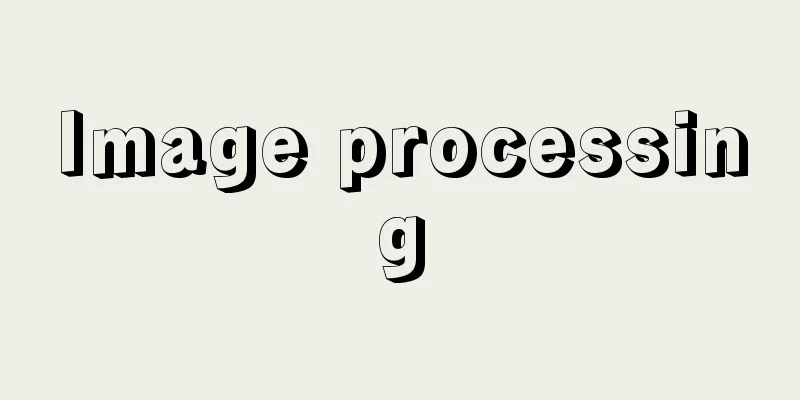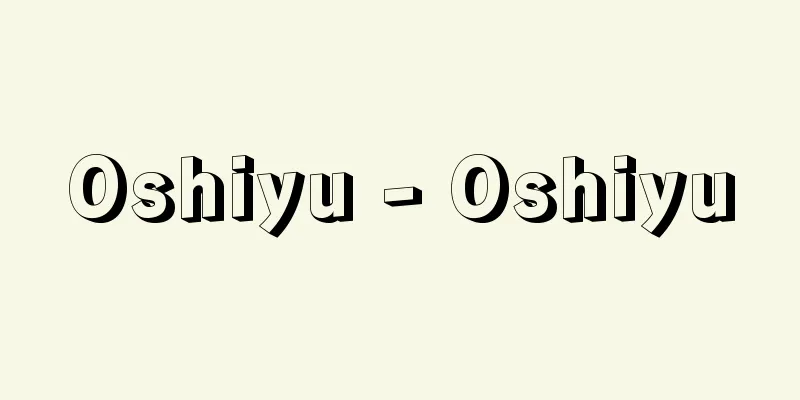Image processing

|
Machine processing of visual information such as television images, photographs, and drawings. This is done to determine whether a specific object is present in an image, or to estimate the state of the original object by measuring features such as size, shape, and color. Depending on the purpose of the processing, such as whether the emphasis is on the analytical/recognition aspect or the measurement aspect, it can be called image recognition, image understanding, image measurement, etc. Image understanding ultimately aims to enable a machine to answer questions about a given image, and is the most difficult problem technically. Other types of processing include image compression, which reduces the amount of data and reduces the burden on storage and communication, and image sharpening, which makes blurry images easier to see. In the broad sense, image processing includes the process of expressing the results of calculations and simulations, measurement data, etc., in the form of easy-to-understand images. Examples include computer graphics technology, which is widely used in computer-based design systems, and the synthesis of X-ray CT images in medicine. This type of image synthesis technology is, so to speak, the reverse operation of the operation of correcting or analyzing a given image, and initially each developed independently, but as their application areas expanded, the two have become more closely related. For example, it is now possible to create a new image by removing a specific part of a given photograph, pasting in part of another photograph, or inserting an image synthesized by computer. This is, so to speak, an image editing operation, and the systems used for this are sometimes called electronic darkrooms in contrast to optical darkrooms. [Munegami Akio] Video ProcessingThis is a technology that deals with moving objects, and in this case too there are problems of analysis and synthesis. In the case of analysis, the most important operation is to find corresponding parts between each frame of a time-series image. In creating moving images, important techniques include a kind of interpolation process that automatically synthesizes images from between two given points in time to create a video with natural overall movement, and technology that synthesizes scenes in various situations in real time based on appropriate models. The latter is used in aircraft flight training simulators, for example. [Munegami Akio] Treatment MethodIn general, image processing is performed by converting an optical image into some kind of electrical signal and processing that signal. When synthesizing images, the original data is also converted into an electrical signal, and that signal is then converted into an optical image using a cathode ray tube or the like. Image input devices are used to convert images into electrical signals and input them. Various types are used depending on the application, such as those that use image sensors like television cameras, and those that determine the brightness of each point by mechanical scanning. Image signal processing may be performed by analog arithmetic circuits, but is usually performed digitally by converting the signal into numerical data. When dealing with an image that directly corresponds to the original image, the image is represented as an array of sampled numerical values on a grid of 500 or 1000 points in each direction. This results in a very large amount of data, and in many cases a dedicated processing device suitable for image processing is used. [Munegami Akio] [Reference] | | |Source: Shogakukan Encyclopedia Nipponica About Encyclopedia Nipponica Information | Legend |
|
テレビ映像、写真、図面などの視覚情報を、機械で処理すること。画像のなかに特定の対象が存在するかどうかを判定したり、大きさ、形状、色調などの特徴量を計測して元の対象の状態を推定したりするために行う。解析・認識的側面に重点を置くか、計測的側面に重点を置くかなど、処理の目的によって、画像認識、画像理解、画像計測などとよぶこともある。画像理解は、最終的には、与えられた画像に関する質問に対して機械が答えられるようにしようとするもので、技術的にはもっとも困難な問題である。このほかにデータ量を小さくして蓄積や通信の際の負担を減らすための画像圧縮、不鮮明な画像を見やすくするための画像鮮明化などの処理もある。 広義の画像処理には、計算やシミュレーションの結果とか、測定データなどを、理解しやすい画像の形で表現する処理も含める。コンピュータを用いた設計システムなどで広く用いられているコンピュータ・グラフィクス技術や、医療におけるX線CT像の合成などもその例である。 このような画像を合成する技術は、与えられた画像を修正したり解析したりする操作のいわば逆操作で、最初のうちはそれぞれが独自に発展してきたが、その応用領域が広がるにしたがって、両者の関係は密なものとなってきた。たとえば、与えられた写真のなかから特定の部分を除去したり、別の写真の一部をはり合わせたり、コンピュータで合成した画像を挿入したりすることによって、新しい画像をつくりだすことが可能となった。これは、いわば画像の編集操作であり、このためのシステムは光学暗室に対比して、電子暗室とよばれることもある。 [棟上昭男] 動画像処理動いている対象を取り扱う技術で、この場合にも解析の問題と合成の問題が存在する。解析の場合は、時系列画像の各こまの間で、対応する部分をみいだす操作がもっとも重要である。動画の作成に関しては、与えられた二つの時点の画像から、その中間の時点の絵を自動的に合成し、全体として自然な動きの動画を機械につくらせる一種の内挿処理のような操作や、適切なモデルに基づいて種々の状況における情景を実時間で合成する技術などが重要である。後者は、飛行機の操縦訓練シミュレーターなどに利用されている。 [棟上昭男] 処理方法一般には、光学像をなんらかの電気信号に変換し、その信号を処理することによって画像処理を行う。画像を合成する場合にも、その元となるデータを電気信号に変換し、さらにその信号をブラウン管などによって光学像に変換する。 画像を電気信号に変換して入力するために用いられるのが画像入力装置で、テレビカメラのように撮像素子を用いるもの、機械式走査により1点ごとの明るさを求めるものなど、種々のものが用途に応じて用いられる。 画像信号の処理は、アナログ演算回路によって行われる場合もあるが、通常は信号を数値データに変換し、デジタル的に行う。元の画像に直接対応する画像を扱う段階では、画像は縦横それぞれ500点とか1000点といった格子点上にサンプルされた数値の配列の形で表現される。そのため、データ量が非常に大きくなり、画像処理に適した専用処理装置を利用する場合も多い。 [棟上昭男] [参照項目] | | |出典 小学館 日本大百科全書(ニッポニカ)日本大百科全書(ニッポニカ)について 情報 | 凡例 |
Recommend
Panormos
…The Mediterranean Fair is held here every year. ...
Ansellia
…(3) South Africa and Madagascar There are few ge...
Folding (bookbinding) - Ori
...It is the process of gathering sheets of paper...
Fujiwara clan
One of the most representative large clans. It is ...
Working Student Support Association
...The term "student part-time work" be...
Abelia - Abelia
Although it is a genus name of the Caprifoliaceae...
Yusuke Asaka
...A Confucian scholar in the late Edo period. A ...
Kyogenshi - Kyogenshi
An actress in the Edo period. Because Kabuki was a...
Ambystomidae
…A general term for amphibians in the order Hynob...
River sand - Kasenzuna
…Currently, most natural sand used as aggregates ...
Willpower - Intention
Legally, the mental capacity to determine the mea...
Hanoi - Hanoi (English spelling)
The capital of Vietnam. It is located in the cent...
Personal bankruptcy - Jikohasan
Bankruptcy is when a person files for bankruptcy w...
Sānī (English spelling)
…Official name = Dawla al-Qaṭar∥State of QatarAre...
North American Nebula
An emission nebula (NGC7000) located near the fir...









